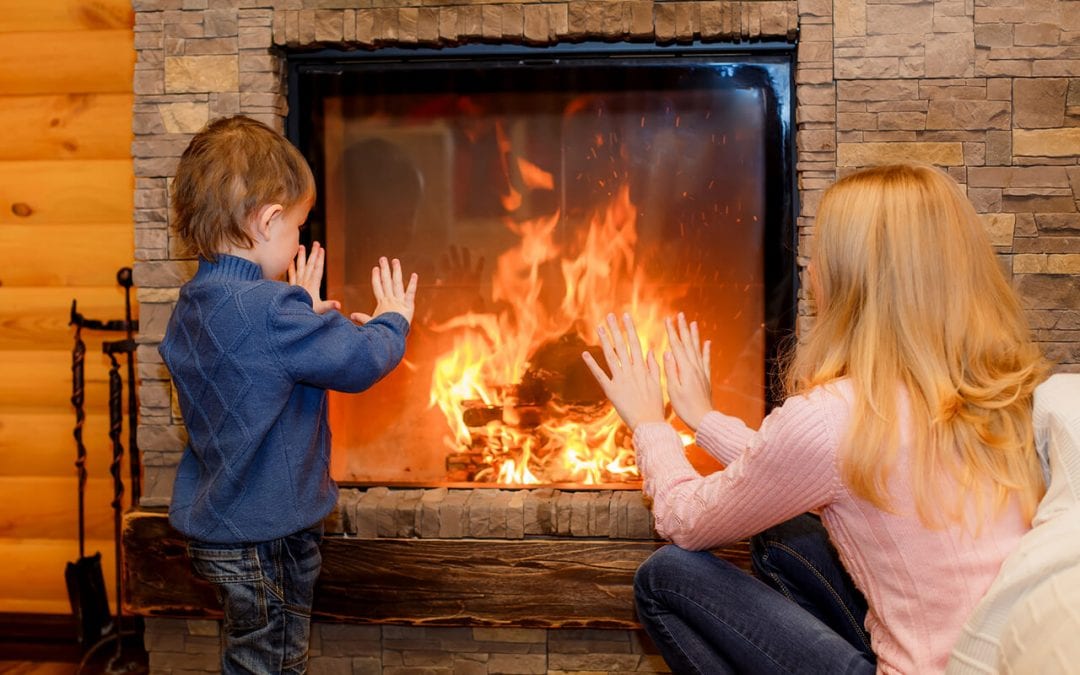A fireplace is a popular home feature. In addition to providing heat to the home, a fireplace provides a cozy setting on a winter night. Because they use an open flame, fireplaces do present some safety hazards. Here are four things you can do to keep your fireplace safe.
Keep Your Fireplace Safe With Good Maintenance
Every fireplace and chimney should be inspected annually, ahead of expected use. The flue should be checked by a professional for signs of creosote buildup. The masonry should be inspected for cracks and crumbling.
The grate should not have signs of corrosion or damage so that it can support the weight of your firewood. Finally, check that the dampers, doors, and flue to make sure that they open and close fully.
Burn the Right Wood
Not all wood is created equal. We understand that in applications like flooring and furniture, but it is just as true with firewood. Certain types of wood are much better to burn in your fireplace than others. Softwoods like pine release more creosote, increasing the odds of a chimney fire. Green wood of any kind creates moisture and also releases creosote.
To keep your fireplace safe, use the best firewood. Choose hardwoods like oak and maple whenever possible, and make sure they have been seasoned for at least six months. Store your firewood somewhere dry year-round so that you don’t reintroduce moisture.
Protect Children
The sights and sounds of a fireplace are very appealing to kids, and you’re likely to find them gathered around the hearth as soon as they come in from playing in the snow.
Make sure that the doors are closed when kids are around. Fireplace screens are okay, but a tempered glass fireplace door is ideal. It’s also helpful to install a baby barrier to keep infants from crawling too close. Remember that the fireplace must be watched at all times when it is burning. Store the poker and other fireplace tools out of reach of children.
Install Smoke & Carbon Monoxide Detectors to Keep Your Fireplace Safe
Burning wood presents the same dangers as burning oil, gas, charcoal, or any other fuel. These hazards include smoke and carbon monoxide in the house. Fireplaces can be a dangerous source of carbon monoxide just like water heaters, furnaces, and vehicles. Make sure that carbon monoxide and smoke detectors are installed and operational, so you aren’t breathing in unhealthy fumes.
Fireplaces can also cause house fires. A buildup of creosote or other debris in the chimney can ignite. There can also be sparks that escape from the fireplace and cause a fire. Keep the hearth and surrounding area clear of newspapers and other fuels, and put a fireproof mat on the floor. If a fire does break out, a working smoke detector will alert you.
A crackling fire is a great feature in any living room. It adds beauty and heat to the home while creating a beautiful backdrop for photos and decor. A fireplace does pose a certain amount of danger, but it is easy to reduce the risk of health and safety issues with these simple tips. Follow them carefully to keep your fireplace safe this winter.
Ace Home Inspections provides home inspection services to homes in Staten Island, the Bronx, and the surrounding areas. Contact us to schedule an appointment.

